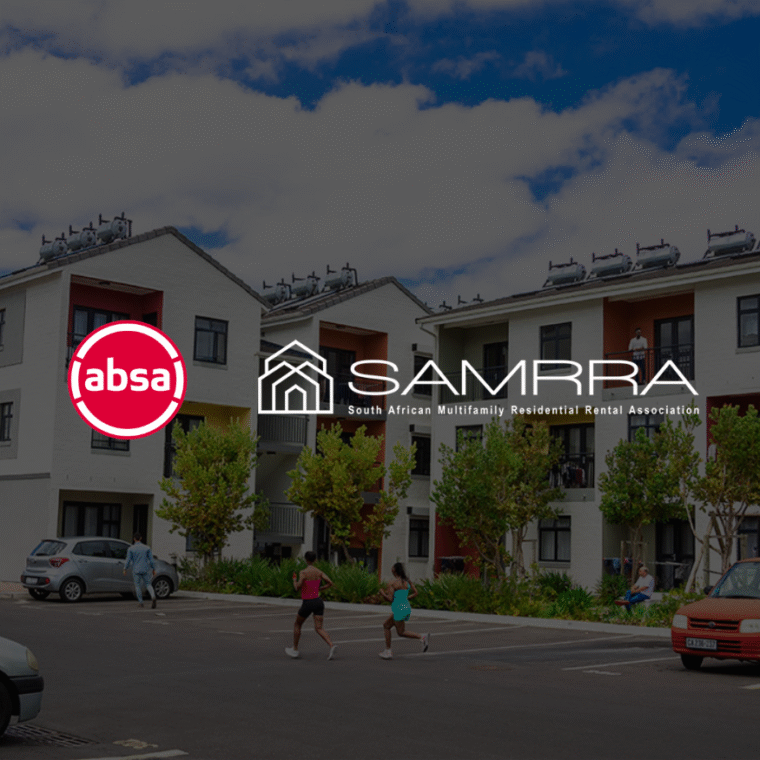By Amelia Dieperink, Head: CPF, Affordable Housing, Absa CIB
South Africa’s large-scale residential rental property market, commonly referred to as “Multifamily”, is fast emerging as a promising segment of the country’s real estate sector. Backed by competitive financial returns coupled with reduced volatility, all while addressing a critical housing shortage, multifamily presents a compelling investment case.
A tipping point for institutional investment
The Multifamily offering has gained momentum, buoyed by the increasing demand for quality affordable, centrally located and well-managed rental housing. Institutional investors are taking note. Statistics South Africa reports that 4.5 million households, or 23% of the national population are currently renting. Of these, 15% (around 685,000 households) reside in blocks of apartments, pointing to a significant opportunity for scale within the multifamily sector.
Multifamily housing refers to institutional ownership and professional management of apartment buildings and residential portfolios. This model is fast becoming the global standard for urban housing delivery. According to the Centre for Affordable Housing Finance in Africa’s recent report, Aligned Interests: The Case for Long-Term Institutional Investment in Multifamily Rental in South Africa, the sector is increasingly “robust, demonstrably resilient, and qualitatively rewarding.”
An emerging and evolving asset class
Despite challenges, ranging from service delivery to economic strain, developers have remained committed to delivering quality, well-managed housing with attractive amenities in desirable locations. The multifamily model has proven itself to be low risk and defensive in nature when well managed by strong operators as well as adaptable and responsive, bolstered by innovation in property management and a surge of interest from both local and international players.
“The residential property market is a major contributor to the South African economy, playing a pivotal role in supporting growth, job creation, and meeting the evolving housing needs of a diversifying population,” notes the CAHF report.
But opportunity alone is not enough. For the sector to realise its full potential, process and structural inefficiencies must be addressed and capital unlocked. Institutional players, lenders, and policymakers must collaborate to accelerate delivery, scale developments, and enhance regulatory support.
The role of strategic finance
Absa Commercial Property Finance (CPF) has been instrumental in supporting the rise of mMultifamily developments, especially within the affordable housing segment. Over the past decade, Absa has focused on this high-growth area, providing financing solutions to investors and developers across the country while also enabling the transformation of urban centres such as Johannesburg’s CBD. Here, obsolete office buildings have been revitalised into thriving, community-based residential spaces. The social impact of this investment cannot be overstated. Beyond providing homes, these developments stimulate economic activity, improve safety, and bring dignity back to neglected urban spaces.
Catalysing impact through sustainability and data
Absa has also led the way in embedding sustainability within property finance. In 2023, the bank concluded a R4.5 billion transaction with the International Finance Corporation under the Market Accelerator for Green Construction (MAGC), the first in size of its kind in Africa. More than half of this funding was allocated to affordable housing projects, cementing Absa’s position at the intersection of environmental and social impact.
Yet, despite the sector’s momentum, one of its most pressing challenges remains the availability of data. Comprehensive, granular, and reliable data specific to the multifamily rental market is lacking. Investment-grade decisions depend on transparency, and for many institutional investors, the absence of detailed analytics has been a key barrier.
Recognising this, Absa sponsored the original MSCI compilation of residential sector data in 2018. More recently, alongside Divercity Urban Property Group, the bank co-funded two critical research studies commissioned by the South African Multifamily Residential Rental Association (SAMRRA), an emerging industry body representing thirteen major players who collectively own and operate over 75,000 units valued at over R40 billion. That figure alone represents 11% of the entire Multifamily market.
A defining moment ahead
As investor sentiment shifts and appetite builds, the focus must now be on scalability. With institutions such as the Public Investment Corporation committing capital and financial institutions such as Absa providing finance, the growing imperative shifts to the increase in delivery of quality housing stock. Unlocking scale will further facilitate a residential focused listed REIT structure improving access to capital while offering the broader investment community a new vehicle for inclusive, impact-driven growth.
South Africa’s Multifamily rental sector stands at a defining moment. With the right blend of capital, data, and policy support, it has the potential to reshape the country’s housing market and, in doing so, drive a broader economic and social transformation.




